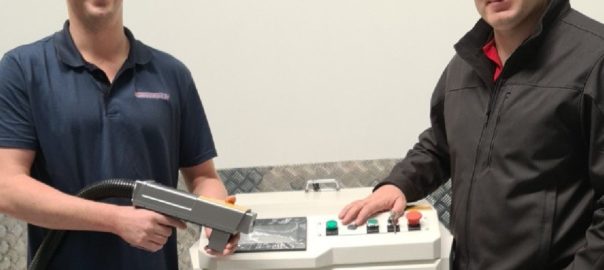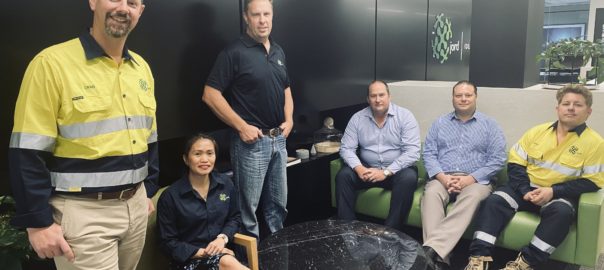BHP, working through its Supplier Innovation Program, is to start trialling a new laser cleaner to remove surface corrosion and prepare metal surfaces for repainting to ensure protection from the elements at its jointly owned Hay Point Coal Terminal operations in Queensland, Australia.
Traditionally pressurised blasting using water or sand has been used for this process.
As part of BHP’s Supplier Innovation Program, a challenge was launched with businesses in the Australian Mining Equipment, Technology and Services (METS) sector to propose alternatives to pressure blasting that would achieve the same results, but reduce risk to personnel from exposure to high pressure and noise, and minimise waste, which currently requires careful management.
Perth, Western Australia-based joint venture Laser Technologies was selected following a competitive proposal and evaluation process to trial a hand-held 1 kW fibre laser, capable of removing old paint and surface corrosion from metal surfaces to a depth of 6 mm, and burning the waste product into harmless vapour.
The Supplier Innovation Program was launched in Australia in 2020 as part of a A$450 million ($330 million) commitment made by BHP to increase support and engagement with METS sector businesses.
The program models a similar initiative that has been running with for the past decade to address business challenges at BHP’s Escondida operations in Chile.
Under the terms of the program, participating businesses are permitted to retain the intellectual property for their designs, enabling them to further commercialise their new products following successful pilot trials with BHP.
In its 2021 financial year, BHP launched eight challenges across its Minerals Australia operations, and plans to establish another 20 challenges this financial year.
Bevan Gostelow, Maintenance Manager at Hay Point for BHP Mitsubishi Alliance, said the Laser Technologies laser cleaner had the potential to be “a real game changer” for industry because of the reduction of risks to personnel and reduced environmental impact.
“High-pressure blasting has been effective in asset integrity maintenance for many years, but the process requires a lot of controls to ensure the safety of our people doing the work, and to prevent the spread of the waste product to protect our environment,’’ Gostelow said.
“The laser cleaner is safe, quiet and easy to use and will not require all of the scaffolding and shrouding to catch waste product, because it is all burned off at the laser head.”
Brendan Tritton, one of two Directors at Laser Technologies, said having the opportunity to present their product to BHP through the Supplier Innovation Program was a “foot in the door that was worth its weight in gold”.
“We have participated in a few innovation programs in the past, but the BHP program has been by far the most effective,” Tritton said. “The team at BHP were really clear about their objectives for this challenge from the start, and that made it easier for us to develop a suitable proposal.
“I think it’s brave of BHP to be running a program that invests in METS businesses because there is the element of risk and reward when you trial new products and technologies.”
James Agar, BHP Group Procurement Officer, said the identification of Laser Technologies for this challenge was the perfect example of what the Supplier Innovation Program was designed to achieve.
“The Suppler Innovation Program was designed to provide Australian METS businesses with opportunities to showcase the new ideas and technologies they are developing, while helping BHP challenge what is possible to improve safety and performance at our operations,’’ he said.








